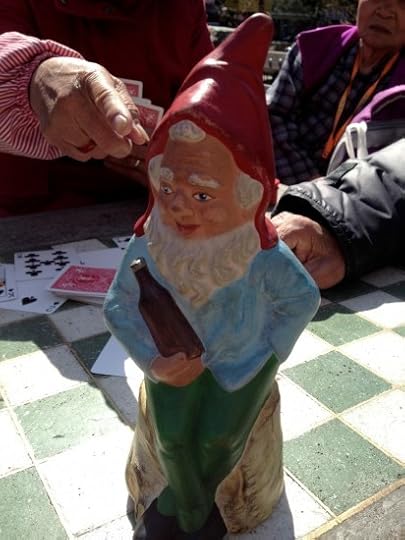Josh Kilmer-Purcell's Blog, page 73
April 18, 2013
5 Beautiful Things
Umbrellas
For my 30th birthday, my friend Louise gave me a very special gift: a clear, plastic umbrella. It was special because she had remembered that I had one as a child and that one of my favorite things to do was to stand under it in the rain, looking straight up at the sky to watch the raindrops smash into it and turn into little rivulets that would scatter all over its surface. My adult version is much larger and doesn’t have little drawings of raindrops around the fringe, but I still look forward to rainy days simply because I know I’ll get to use my umbrella.
The word umbrella is derived from the Greek word umbra, which means shade or shadow. Early examples of umbrellas or parasols can be traced back to the 11th Century, B.C., in China where they were seen as a sign of wealth, used mostly to shield aristocrats from the sun. There is also evidence that umbrellas were used in the same period in India. In ancient Egypt, too, the parasol was an indication of wealth.
So, in honor of April showers, I’ve gathered some lovely images of umbrellas in use. From above, they must look like a river of floating multi-colored flowers flowing down sidewalks. Umbrellas are useful, stylish, inventive and practical. They are, in a word, beautiful.
To read more about the history of umbrellas, click here
Photos:
1. Aterriblehumanbeing.tumblr.com
2. Sarahing.tumblr.com
3. onemustcreate.tumblr.com
4. pretty.stuff.tumblr.com
5. travel.nationalgeographic.com
Andrew Ritchie is the creator of Martha Moments, a blog devoted Martha-Stewart related content and her community of supporters. He lives and works in Toronto, Canada, and has been a longtime friend of Brent & Josh, Beekman 1802 and Sharon Springs. Each week he’ll scour the world (wide web) to find the 5 most beautiful things to inspire you. Follow Andrew on Pinterest.
April 17, 2013
The Chatter for April

We’ve lobbied really hard for Garrison Keillor to give up life in Lake Wobegone and move to Sharon Springs, but thus far he has not answered our letters or returned our calls.
Sharon Springs has beautiful people and above-average children, too, so on to Plan B.
What is a small town village without a small town paper to keep track of what everyone is doing?
Leila Durkin, proprietor of The Village Hall Gallery, is now editor of our own little paper.
Each month you can check back here for a new issue and follow the lives of the real village people. If you pay a real visit, you may even want to submit a story idea of your own!
You may not live in small town, but at least you can pretend.
See below for the April 2013 Issue
April 13, 2013
Gartending: Freshly Minted
Gin is in for early spring! Oh, please don’t get me wrong; it’s early spring- even though it doesn’t feel like it outside. Klaus is most concerned about the tasty mint out in the garden. Will the cold damage the mint? Let’s ask the mint!
Klaus: “Will you get frost burned?”
Mint: “Yes”
Klaus: “What would you like to do about this?”
Mint: “Pick me and add me to a cocktail with this marvelous ginger ale I just found.”
So there it is. Klaus is determined to have a drink with the mint BEFORE it gets frost bitten. And how will he do that? By picking the mint just as it comes up out of the ground……
Klaus is getting ready for a lovely season of “gar-tending.” You know, making drinks from the garden. Mint is one of the first things to come up out of the ground and one of the last things that remain after the other herbs and vegetables have gone for the season. Freshly picked mint is aromatic and enticing. The oils from the mint stick to Klaus’s little ceramic fingers and some of the bits of mint get stuck in his ceramic beard. There is not nearly enough mint for a batch of mint jelly, but more than enough for a few cocktails.
Klaus is extra thirsty this morning for something more than his usual cup of coffee. He received a few bottles of the Bruce Cost Ginger Ale in the mail yesterday. This is not your usual ginger ale made with corn syrup (Ew!)or other artificial ingredients. Bruce Cost makes his aromatic, ginger ale with real flavor! What makes the Bruce Cost Ginger Ale so amazing is the unfiltered nature of this product. There is stuff floating all around the inside of the bottle! With handcrafted flavors such as their aromatic Original Ginger, Jasmine Tea, Pomegranate with Hibiscus (my favorite) and Passion Fruit with Yellow Ginger (Turmeric).
Klaus has found the Bruce Cost Ginger Ale as a worthy recipient to his cocktailian exploits! And with a small producer, Vermont sourced, handmade gin made with raw honey? It’s practically otherworldly!
Sitting in front of Klaus (and me) is a bottle of the extremely small producer and exotic, Barr Hill Gin from Vermont. It is distilled with raw honey.
Why is this important? Because of the healing nature and energy of honey! The flavor profile is sweet, toasty grains in the background, juniper in the foreground and honey swirling all around, binding the front to the middle to the back of your mouth. For anyone who says they enjoy honey- they probably have never had real honey. Raw honey is never boiled and it is never cut with water to dilute the powerful healing elements of this truly artisan product. Raw honey is rich in antioxidants too!
Barr Hill Gin (or their salubrious Vodka), might as well be made with care by gnomes! Klaus? Did you make the Barr Hill? Klaus?
Oh, he’s wondered off again. Probably looking for a party or a cocktail. Or a little bit of both.
Klaus’s 60’s Dream Parade Cocktail
Ingredients:
2 oz. Barr Hill Gin (Distilled from Raw Honey in the Northeast Kingdom of Vermont)
.25 Darjeeling Dark Tea (as a wash) in each glass
6 oz. Bruce Cost Unfiltered Fresh Ginger- Ginger Ale – Pomegranate with Hibiscus Soda
4 drops Bitter End Moroccan bitters
Orange Zest
Fresh mint (Klaus uses Kentucky Colonel variety)
Preparation:
Wash the tea around the inside of your glass
Rub the inside of an Old Fashioned glass with the orange zest
Rub with the fresh mint
Add one large cube of ice- preferably filtered through a Mavea “Inspired Water” filter. (The final resulting ice turns out nearly crystal clear! It makes a great presentation in your glass)
Add the Barr Hill Gin right over the top of the large cube
I use a silicone 2 x 2 tray for my ice cubes
Top with a measure of the Bruce Cost Ginger/Pomegranate-Hibiscus (ginger ale) soda
Garnish with about four drops of the Bitter End Moroccan bitters and a twirl of orange.
Klaus would want you to have a couple and should you want to be really bad, he’ll join you for another before it’s time to break out the Fernet Branca.
Cheers!
April 12, 2013
PolkaSpot in Paradise
PolkaSpot would like us to remind you that “lloooooooooong before Faintly” she was the original world-traveler. When we launched the PolkaSpotted app for the iPhone last year, we had no idea all the places she’d go and all the people she would meet. You can check in on her travels at her website (yes, she has her own website) by clicking here
She was kind enough to document her recent trip to Hawaii for us all (she’s generous that way). Wish you were here!



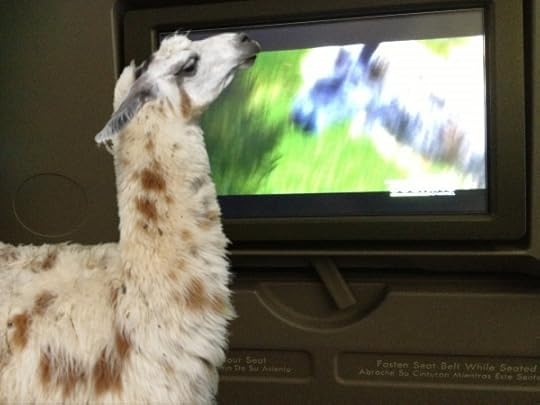


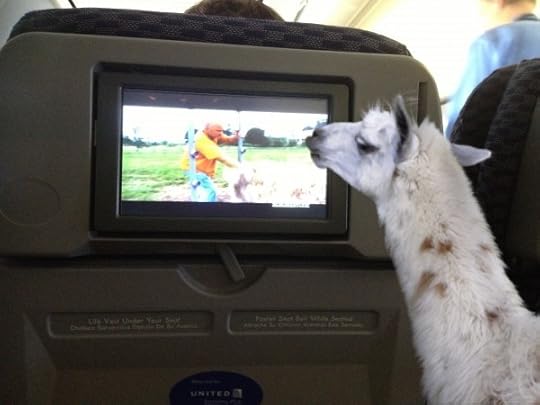











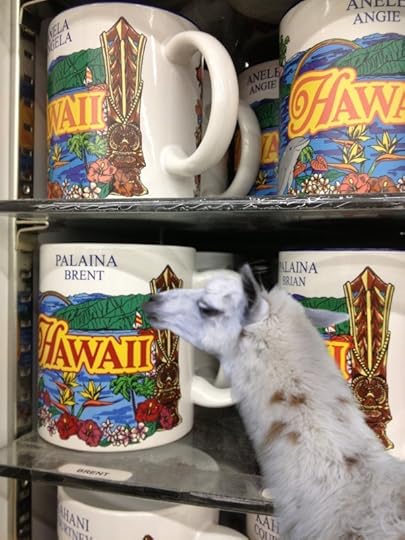


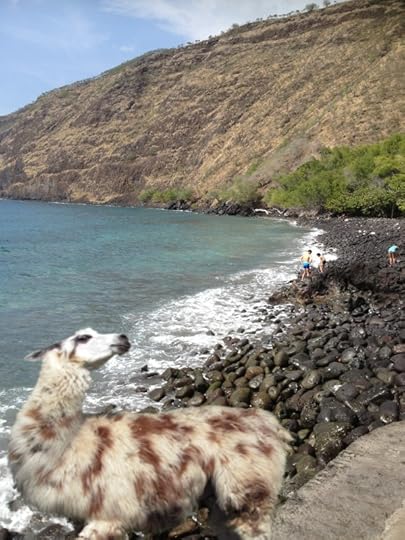








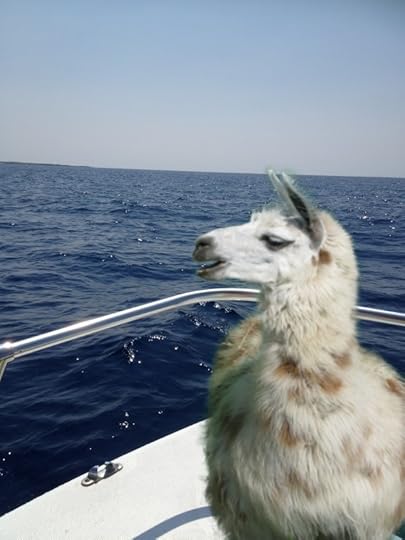
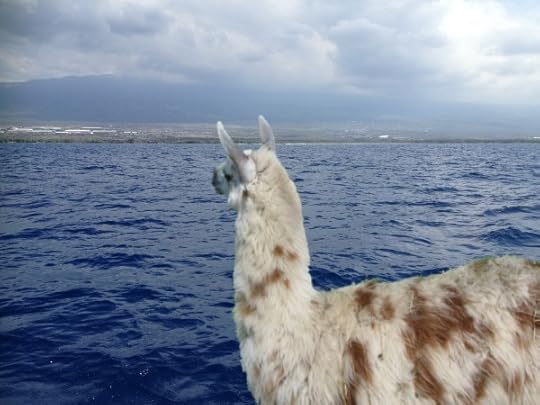

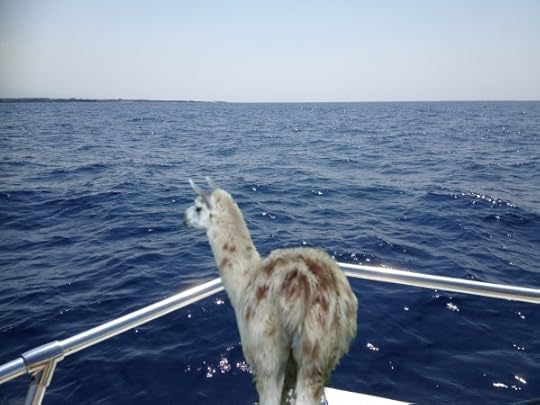

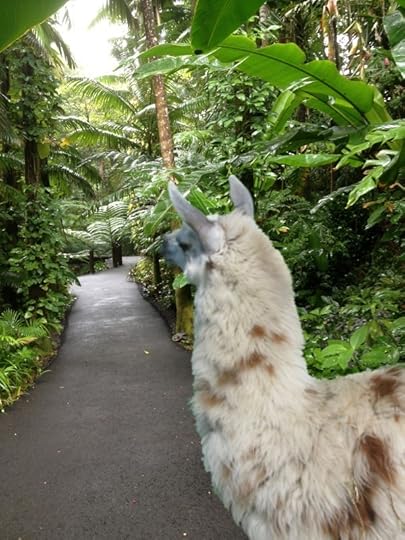

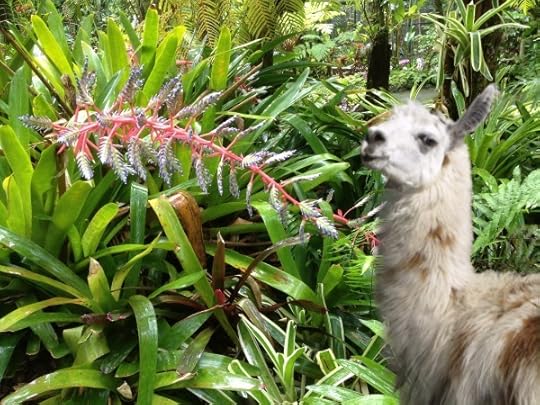


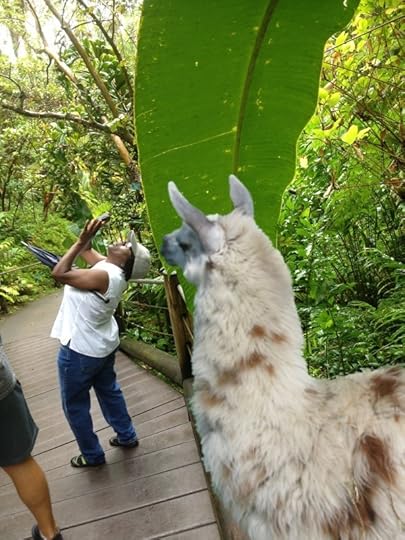
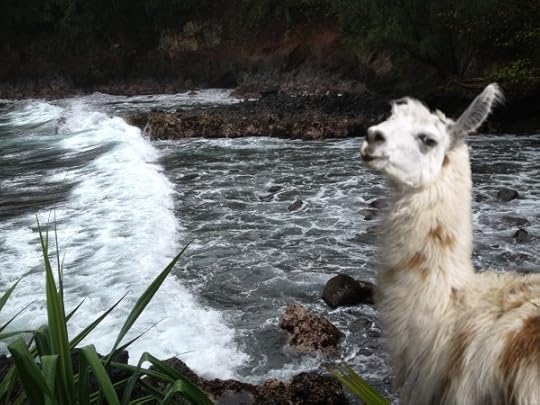




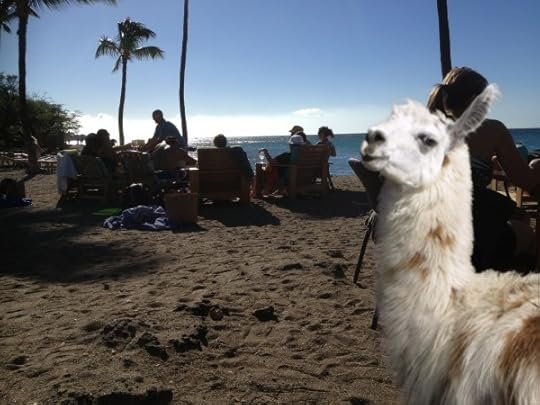








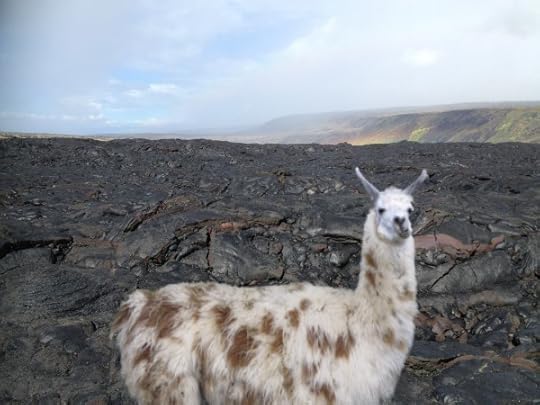




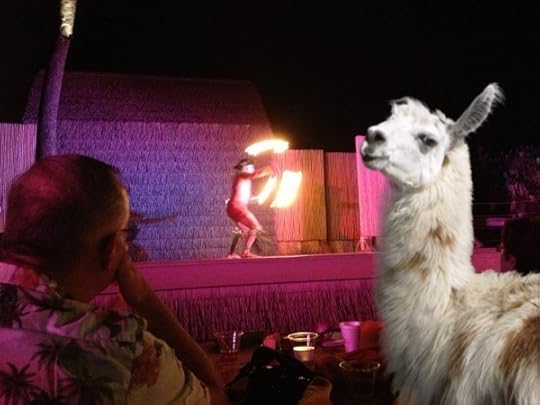




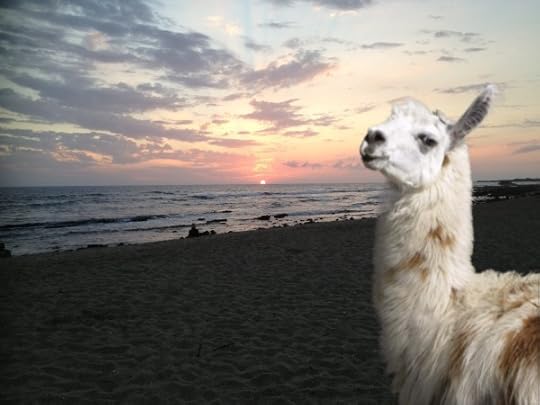
<
>
You can take PolkaSpot with you, too. Check out the iTunes store for the Polka Spotted ap. Change the PolkaSpot pose by swiping your finger across the screen of your phone.
Where do you wish YOU could travel with PolkaSpot? Tell us in the comment section below.
April 11, 2013
5 Beautiful Things
What’s in a Name?
“A rose by any other name would smell as sweet.” In this case, I think Shakespeare got it wrong. Would we revere this flower’s iconic scent if it was really named hideous maximus horriblous or pink excrement on a thorny stick? I think not.
Names are terribly important to our perception of the objects, animals and people we encounter, although we may not always realize it. The subject of names is on my mind lately since so many of my friends and colleagues are having babies these days. The names of choice have been really charming, often referencing cherished ancestors who have long since passed, or names relevant to the family’s heritage.
The naming game is an epic one at Beekman farm, where Brent and Josh excitedly await the names of the newborn goats, names which are almost always chosen by the great Farmer John. He has never wavered from his naming system and it has never failed. No goat at Beekman has the name of another goat (Brent tells me there has never been a duplicate) and each name begins with the first initial of the kid’s mother. We’ve all seen photos of the fabulous Faintly, whose name is probably my personal favourite. (Settle down now, Polka Spot! Settle down!)
Names are like beautiful accessories to our personalities and personas. Most of us will only have one name in our lifetime, unless we decide to take the surname of a spouse or legally change it to shirk off any unwanted connotations. Our names are emblazoned on our mail, our passports, our deeds and credit cards. It is inscribed on our birth certificates and it will be chiseled into our grave stones. In many ways, it is our most valuable intagible possession.
We’d love to hear some of your favourite names in the comments section below. Just for fun, try also naming these quirky zoological characters, artistically photographed and collaged by Yago Partal, one of my favourite photographers. These furry fashionistas are crying out for great names!
To see more of Yago Partal’s zoo portraits, click here. You can also order prints.
Visit Yago Partal’s website to see more of his photographs and portraits.
April 10, 2013
Former Glory
Born and raised in NJ, Jeanne C. Hildenbrand first discovered her love for photography through the lens of a small plastic camera, courtesy of Bazooka Joe and his Bubble Gum comics she’d saved. She worked her way through the various instamatic cameras of the mid 1970s and then before making their first trip to Alaska in 1979 she and her husband bought their first 35mm SLR and gave themselves a crash course in how to use it. They eventually settled in the Hudson Valley and she has been photographing their adventures and travels ever since. In 2005 Hildenbrand started experimenting with digital photography and in the years that followed she went back to college in order to build a more formal education in both digital photography and black and white film developing. While taking this more concentrated approach to her photography she found her view of the world changing and opening up, bringing her down a road towards her photographic vision. The play of old/new, light/dark, nature/man has always been an emotional driving force behind Hildenbrand’s work. In her latest project, “Sharon Springs: A Town Left Behind” she’s managed to capture that captivating struggle and emotion, as some see beauty and smile, while others cry and wonder why.
“Sharon Springs is a small town that has had a roller coaster ride over the past two hundred years, and now as you walk the streets you can see and feel the effect the ride has had. I am overwhelmed with a desire to uncover the stories that linger behind it’s windows and doors. With my images I hope to express what I feel as I walk through this historic town.”–artist Jeanne Hildenbrand


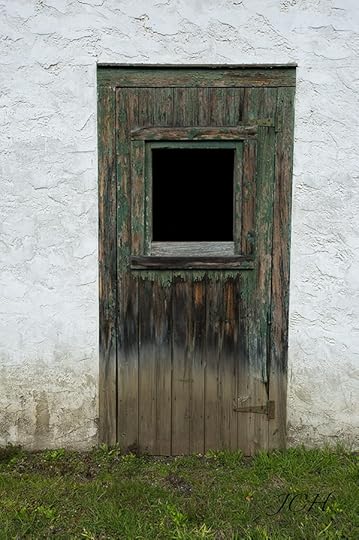



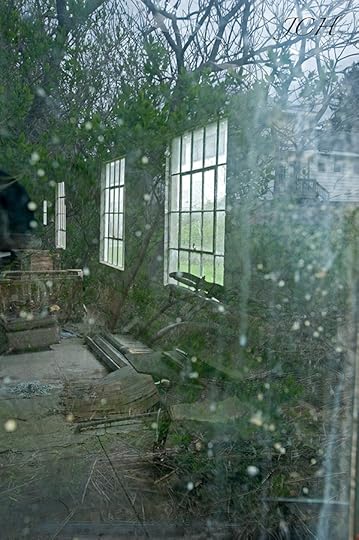

<
>
See more of Jeanne’s beautiful imagery by visiting her website. Click here
April 8, 2013
Faintly on the Job
Last Sunday, we brought Faintly down to the Mercantile so that folks could meet her. We thought you might like to see a few pics from her day as the wee littlest shopgirl…







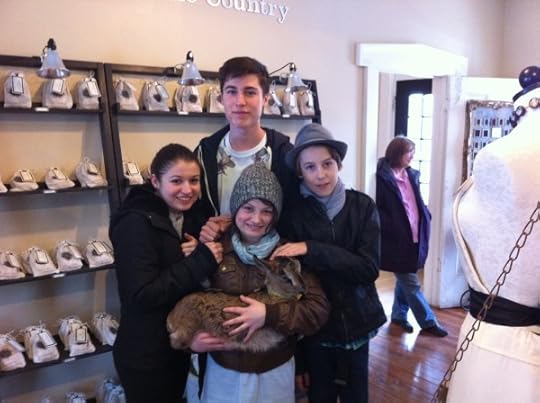



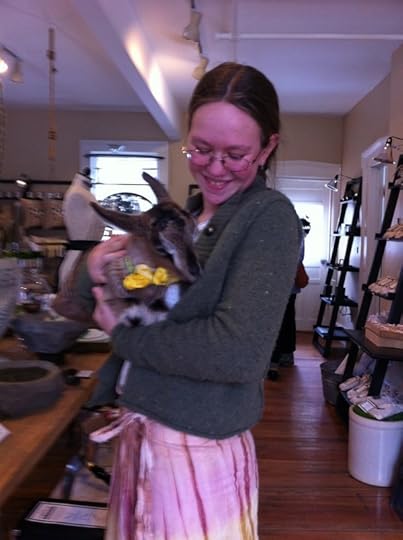
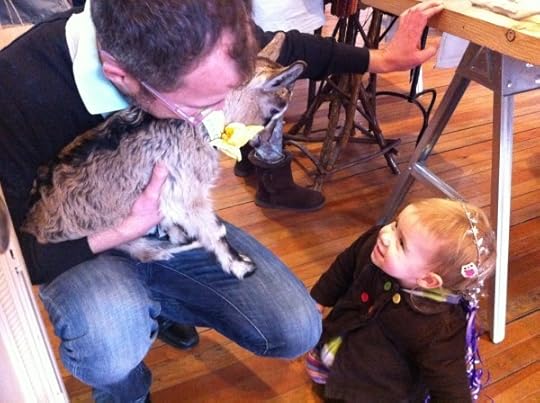
<
>
April 4, 2013
5 Beautiful Things
A House in Rhinebeck
Before artist Lisa Camp and her husband renovated their 160 year-old farmhouse in Rhinebeck, a small village in the Hudson Valley in upstate New York, they discovered numerous surprises – some delightful, some not. A snake nest in one of the upstairs bedrooms and a raccoon’s den in the attic were among the unfortunate finds – as was a list of repairs longer than the average measuring tape! On the upside, quirky treasures such an old class ring, an original Doors album from 1968 (still in its packaging) and a child’s name carved into the one of the window frames gave the house a happy spirit.
Looking at these beautiful photographs below, it is difficult to believe that the house was in shambles when the couple purchased it in 1999. Only four families in its century-and-a-half history have called the address home and its current residents have achieved the perfect balance of comfort and style by bringing a youthful energy to the place without compromising its architecture. Bright rooms are kept that way through the use of light neutrals and uplifting hits of colour. A balance of modern and traditional elements keeps the spaces vital and prevents them from slipping into stuffy-farmhouse territory. Enjoy this little tour of their home!
Photos by Jamie Beck. You can see more photos here. The home was originally profiled in issue five of Rue magazine.
Andrew Ritchie is the creator of Martha Moments, a blog devoted Martha-Stewart related content and her community of supporters. He lives and works in Toronto, Canada, and has been a longtime friend of Brent & Josh, Beekman 1802 and Sharon Springs. Each week he’ll scour the world (wide web) to find the 5 most beautiful things to inspire you. Follow Andrew on Pinterest.
April 3, 2013
It’s All Greek
When we do book signings we are often fortunate to have people bring us gifts of food from their own kitchen. At a recent stop in Washington, DC, we met Elvira Garnett and her son, John. They shared a delicious Greek cookie with us and we, in turn, convinced them to share the recipe with you.
John is earning a doctorate in International Food History and is the owner of a sweet food cart called Wandering Zorba. (check out their website for more great recipes by clicking here)
John shares a little bit about the history of this traditional Greek dessert:
-A Bite of History-
Butter. The essence of kourabiedes lies in using high quality butter, so that they melt in your mouth and make an irresistible duo with a hot cup of coffee. Kavala, a town in Northern Greece, is famous for making the best kourabiedes in Greece. Their secret lies within the use of butter made from buffalo which are an important product of the region. On the other hand, many traditional regions of Greece such as Veroia argue that the only way to make proper kourabiedes is to use goat butter. Goat butter gives the kourabiedes their irresistible light and rich flavor, while sheep or cow butter lives them a little heavier.
Light and delectable, buttery, and piled high with powdered sugar, kourabiedes are a staple of the holiday season in Greece. During Christmas, many kourabiedes are dressed with a single, dark clove in the middle which is supposed to represent the spices, frankincense and myrrh, that the Magi brought to baby Jesus on his birth.
Kourabiedes were introduced to the Greeks during Ottoman rule, but they evolved independently and now taste very differently from the Kurabiye from which they came, though no Greek will admit to their Ottoman origins. During Ottoman rule, kourabiedes were cut into crescent shapes as an act of deference to their colonizers, but this practice lost favor following Greek independence in the early 19th century. Byzantium, which would become the Roman Empire’s Constantinople and present-day Istanbul, had a crescent as its symbol during Greek rule based upon the Greek goddess Artemis. Ironically, the Ottomans adopted the crescent when they conquered the city in 1453, and its origins were obscured over time. Another legend has it that it was not the Ottoman crescent from which the Greeks shaped their sweets; the lack of cutting equipment and molds led Greeks to cut their cookies using the edge of cups for drinking water which gave the cookies a natural curve. The story of kourabiedes is not about origins. The hybrid nature of it illustrates the ways that culture transcends borders we erect around nations and empires. Culture is constantly shared, adopted, cannibalized, and adapted to local regions, but it is never “authentic.” What we think of as globalization today is a process that has been ongoing for centuries, and food is a wonderful way to tease out history.
In the Balkan Wars of 1912-13, Greeks began to use a slang term for soldiers calling them “kourabies.” At first glance, kourabiedes look solid and pristine, but they crumble the minute you take a bite. “Kourabies” were soldiers that looked strong and promising but crumbled the minute they were in battle and showed weak will. This slang carried over to World War II as well. The Greeks named Mussolini’s Italian soldiers “kourabiedes” because they were weak-willed and crumbled easily in battle.
The connection with kourabiedes and danger didn’t end when the hostilities of World War II ended. Well-seasoned Greek bakers often make kourabiedes only in bite-sized portions because novice eaters often mistakenly breathe in or out as they take a bite of larger kourabiedes. The light and airy powdered sugar can easily be inhaled and a cloud of dust induces cough. Unlike the “kourabiedes” in World War II though, most people courageously adjust and continue to eat these historical sweets.
KOURABIEDES
INGREDIENTS
1 cup of butter (goat’s milk recommended)
¼ cup powdered sugar
½ teaspoon vanilla
1 egg yolk
½ teaspoon baking soda dissolved in 2 teaspoons of lemon juice. Or many traditional recipes use 1 shot of brady or Metaxa instead of lemon juice.
3 -4 cups all-purpose flour
1 cup slivered almonds
2-3 cups confectionery sugar for the topping
DIRECTIONS
Bake almonds at 350 degrees Fahrenheit for 10 minutes until aromatic. Or sauté until slightly browned. Set aside.
Beat the butter for ten minutes until nice and frothy.
Add powdered sugar and beat for 2-3 minutes more.
Add the egg yolk, baking soda, and lemon juice or Metaxa/brandy. Beat eat until well incorporated.
Add flour gradually to the mix, one cup at a time until you have a nice soft batter. Make sure the batter is soft to the touch as this is the most important step.
Add almonds to the batter and incorporate gently.
Use a 1 ¼ inch – 1 ½ inch diameter cookie scoop to make the cookies. Place cookies on a parchment-covered pan – an inch apart.
Bake in a 350 F. degree oven for 10-15 minutes or until bottom of the cookies are light brown.
Sprinkle confectionery sugar of serving or storage dish. As soon as the cookies come out of the oven, place them on the newly sprinkled pan.
Sprinkle the cookies with the remaining confectionery sugar to which you have added ½ teaspoon of vanilla.
Recipe makes 40-60 pieces depending on the size of your scoop. Time in the kitchen about 1 hour to 1.5 hours.
Good luck eating just one!
April 2, 2013
Palm of Your Hand
It seems like virtually every employee that finds their way to Beekman 1802 has creative streak that cannot be suppressed. Even the long days and hard work at a fast-growing company cannot deter.
Vicki Whicker is the Beekman 1802 Director of Wholesale Accounts.
In 2011, Vicki left Los Angeles for central New York to renovate an 1820′s farmhouse that she found on Facebook and purchased, sight unseen. The rundown property, she would later learn, was named “Dunga Brook,” a once a thriving dairy farm spanning over 2,000 acres in Otsego county. While waiting for renovations, Whicker explored the area using her iPhone to capture the world above and below her feet.
It was this impromptu exercise that marked her personal awakening to the astounding beauty of New York State; beauty that has surely been here since Dunga Brook’s hay day.
Of the contemporary medium and her process, Whicker states, “iPhoneography as a mobile method for making art and as a creative movement was exploding around the world while I was stalking the flora and fauna of my new home. Coming from LA, I was in a paradise- the lush trees, the long country roads lined with Queen Anne’s Lace big as pie plates, the crimson and gold fall leaves, those first pristine snow flakes. The more I shot, the more I saw; the more I saw, the more I wanted to see…by the time my house was done 6 months had passed and I had produced over 20,000 images…through the lens of my iPhone I fell completely in love with central New York.”








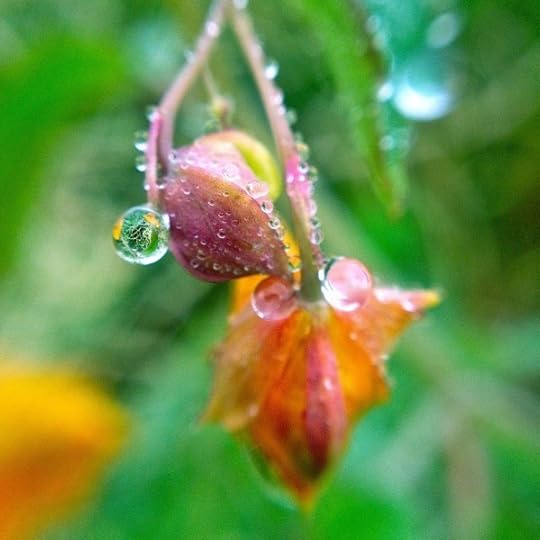

<
>
Dunga Brook Diary: A Year of Seeing Differently, is Whicker’s first iPhoneography exhibit and features her evocative 8″x8″ limited edition images printed directly on metal.
Cherry Branch Gallery in Cherry Valley, NY, (the next village over from Sharon Springs) will be hosting an opening reception on Saturday, April 6, from 5-7pm. Works will be available for viewing and purchase throughout the month of April
Art is in the palm of your hand.



